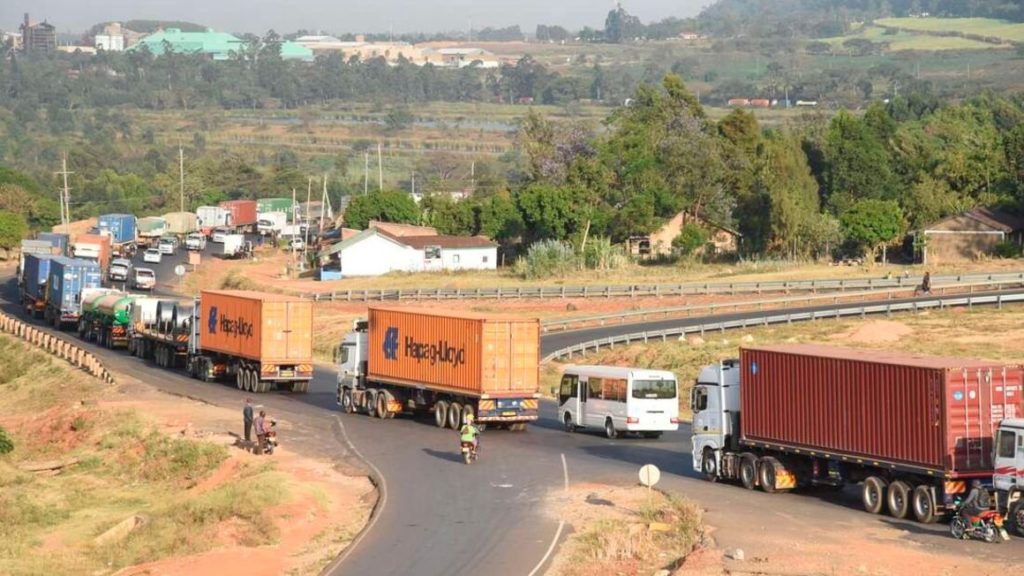Long distance trucks on the Eldoret-Webuye highway, joining the long queue from Malaba border before proceeding to Uganda. PHOTO | JARED NYATAYA | NMG Kenya and Uganda have introduced new measures to expedite the clearance of goods still stuck at Malaba border posts after weeks of protests by truck drivers over Covid-19 testing. Although the Uganda authorities suspended the testing, the 70km traffic jam created by the drivers’ strike has taken more than a week to clear.
More measures were needed to speed up the clearing of trucks as Ugandans struggled over the last one week to get fuel, whose price has increased tremendously.
Hundreds of trucks have been cleared at the border, but for a border post such as Malaba which clears over 1,000 trucks daily, it is still a tall order to clear the thousands of trucks still on the queue.
In Uganda, Prime Minister Robinah Nabbanja suspended the weighing of cargo by the Uganda National Roads Authority. Uganda has also diverted empty trucks and those carrying empty cargo containers to Lwakhakha border post, about 50km north of Malaba. Kenya has also diverted some cargo to Busia to decongest Malaba where a four-week impasse saw long lines of trucks packed on the Kenyan side.
Abel Kagumire, Commissioner for Customs at Uganda Revenue Authority, said the measure has reduced congestion at Malaba One border post.
“[On Sunday] we cleared 54 trucks. Today (Monday) by midday, we had cleared 22 Ugandan and transit trucks to DR Congo, Rwanda, Burundi and South Sudan,” he said.
Addressing talks organised by Trademark East Africa and the East African Business Council at the border town, Mr Kagumire said, “By Wednesday, there will be no backlog.”
The Chief executive East African Business Council, John Bosco Kalisa, proposed preferential treatment of goods produced within the region.
“Create green lanes for goods produced within EAC to boost intra EAC trade,” he said.
“Intra-EAC trade in comparison to other regional blocks is still below 20 percent and this has partly been attributed to the various non-tariff barriers, inadequate product diversification, restrictions and competition from products originating from outside the East African bloc.”
